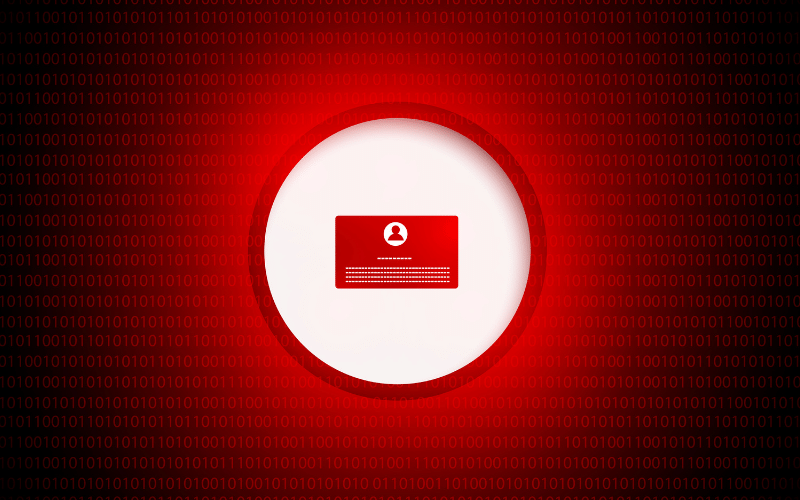How Cloud IAM Security Vulnerabilities Are Being Exploited

What is IAM Security?
IAM is an abbreviation for identity access management. Identity access management systems allow your organization to manage employee applications without checking in to each app as an administrator. IAM security solutions allow organizations to manage a variety of identities, including people, software, and hardware.
IAM Infrastructure
Over the past few years, businesses have been making the move from on-prem to cloud-based operations for their business. This has been majorly contributed by the rise of SaaS applications that have allowed businesses to increase operational efficiency through the cloud.
While this brings numerous business advantages, it has further complexified the array of required appliances and services needed to keep the business running smoothly. Many organizations often use multiple different cloud service providers across numerous different services.
This has increased infrastructure complexity, while making security management more difficult. Added to this is the fact that cloud environments constantly operate and run whenever they are. This availability allows the business to run smoothly without fail, but also leaves them vulnerable to exploitation whenever a malicious actor wants to access them.
IAM security layers have become an increasingly popular attack vector as things have moved to the cloud. Such attacks utilize phishing-acquired security tokens to a devastating degree, allowing a cybercriminal to assume any role within the network.
Cloud providers such as Amazon Web Services (AWS), Microsoft Azure and Google Cloud all have various IAM security measures when managing their platforms. Using Amazon Web Service’s IAM policies as an example, we will look at how a malicious attacker could exploit a vulnerability and assume roles.
IAM Security Roles
First, we need to understand how IAM roles come into play. Authentication tokens are assigned to each user identity in AWS. But suppose you wanted to offer network access to a third-party application, tool, or web server. Creating and maintaining users account for each service could prove quite difficult.
AWS considered this issue and created a solution known as the IAM role. A role lacks a username/password or access key, as it doesn’t pertain to a specific user. IAM roles serve as a distinct identity with assigned permissions that determine what the identity can and can’t do within AWS. When users can take on different responsibilities, other roles can be assigned to them.
IAM Security Vulnerabilities
The complexities of enterprise cloud infrastructure have increased the exploitation of IAM security vulnerabilities. Exploitation can occur in various scenarios, such as when debugging in a DevOps environment, where an administrator is provided permissions for testing. This may be forgotten after testing is completed, allowing an attacker to potentially reuse the administrator credentials to access other parts of the cloud environment.
IAM security threats might also stem from other vulnerabilities such as:
Server-Side Request Forgery (SSRF)
Assume a cyber attacker discovered a website running an unpatched application with a common server-side request forgery (SSRF) vulnerability. An SSRF vulnerability allows an attacker to force a server-side application to send HTTP queries to a random domain of the attacker’s choice.
In most cases, the webpage will display the English version via eng.php. Nevertheless, if an attacker modifies the eng.php file to refer to a another URL, the web server will comply. Since the request originated from an internal source, it will then answer if the destination of the request is from an inside resource (such as the instance metadata server).
Misconfigurations
Misconfigurations are another major cause of breaches in IAM and cloud environments, often leading to data loss or unauthorized access to cloud systems. They often arise due to a poor understanding of their complex cloud environment. Fortunately, there are various tools and methods that organizations can use to address this.
Companies should implement a solution that can identify both malicious and unintentional misconfigurations in cloud setups from all entry-points, while enabling a multi-cloud environment. Along with detecting misconfigurations, this solution should offer a means to correct them.
Cloud-Native Application Protection Platform (CNAPP)
Cloud-native application protection platforms offer a solution to common IAM vulnerabilities such as these. A CNAPP analyzes both the cloud infrastructure plane and workloads to give you a complete picture of both. Logging offers one such effective measure for mitigating IAM vulnerabilities by providing insight into who and what is active within a given network.
It is important for enterprises to gain complete visibility of their complex cloud environments to mitigate IAM security threats. Since entry to a network can be granted either directly or indirectly, graph models can be easily used to clearly illustrate the specific relationships between identities and their respective rights. Since each organization’s structure and demands are unique, the ability to leverage granular insight of this data is critical.
Cloud IAM Security: Final Thoughts
Implementing the above steps to increase and manage your network visibility, data logging, and misconfiguration detection will help mitigate cloud IAM security vulnerabilities while preventing major security breaches before they happen.
Try Portnox Cloud for Free Today
Gain access to all of Portnox's powerful zero trust access control free capabilities for 30 days!



